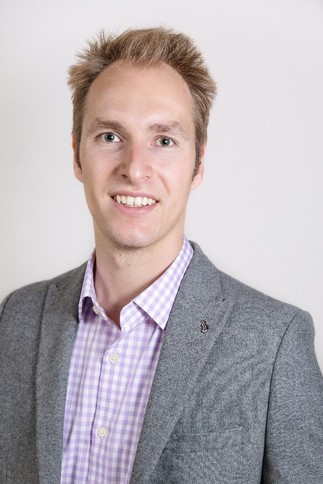Assistant Professor, University of Montreal, Department of Chemistry
From nature’s enzymes to synthetic metal-organic frameworks (MOFs), three-dimensional catalysts possess key inherent attributes that enable then to function in a manner not feasible in non-porous materials. For example, enzyme catalytic pockets feature not only binding sites, but also amino acid residues that stabilize high-energy intermediates through hydrogen bonding or electrostatics. Local hydrophobicity modulates reorganization energies and an adaptable structure responds to stimuli. Porous amorphous catalysts similarly feature structural rearrangement to yield a catalytically active state upon the application of a voltage, though they lack a well-defined hierarchical structure.
The chemical tunability and three-dimensional structure of MOFs has drawn great interest in designing functional materials with predetermined, precisely controlled pore dimensions and chemistry. In the context of electrochemistry, MOFs have been used as supercapacitors, battery electrodes, and catalysts for fuel cells and fuel forming reactions. MOFs here are especially advantageous as their inherent porosity and high density of catalytically active sites is beneficial for electrocatalysis.
In this talk, I discuss how my PhD training in heterogeneous electrocatalysis and postdoctoral experience in biological systems has sculpted my independent research program at the University of Montreal which aims to combine the best of both worlds in electrocatalyst design. I will demonstrate how MOF-based materials are applied as electrocatalysts for the conversion of CO2 to useful fuels and chemicals. In addition, I detail how in-situ spectroscopy on these MOFs elucidates their dynamics throughout the course of reaction and the mechanism of their catalytic cycle.
Lien pour le site du Pr Kornienko
Cette conférence est présentée par le RQMP Versant Nord du Département de physique de l'Université de Montréal et le Département de génie physique de Polytechnique Montréal.
From nature’s enzymes to synthetic metal-organic frameworks (MOFs), three-dimensional catalysts possess key inherent attributes that enable then to function in a manner not feasible in non-porous materials. For example, enzyme catalytic pockets feature not only binding sites, but also amino acid residues that stabilize high-energy intermediates through hydrogen bonding or electrostatics. Local hydrophobicity modulates reorganization energies and an adaptable structure responds to stimuli. Porous amorphous catalysts similarly feature structural rearrangement to yield a catalytically active state upon the application of a voltage, though they lack a well-defined hierarchical structure.
The chemical tunability and three-dimensional structure of MOFs has drawn great interest in designing functional materials with predetermined, precisely controlled pore dimensions and chemistry. In the context of electrochemistry, MOFs have been used as supercapacitors, battery electrodes, and catalysts for fuel cells and fuel forming reactions. MOFs here are especially advantageous as their inherent porosity and high density of catalytically active sites is beneficial for electrocatalysis.
In this talk, I discuss how my PhD training in heterogeneous electrocatalysis and postdoctoral experience in biological systems has sculpted my independent research program at the University of Montreal which aims to combine the best of both worlds in electrocatalyst design. I will demonstrate how MOF-based materials are applied as electrocatalysts for the conversion of CO2 to useful fuels and chemicals. In addition, I detail how in-situ spectroscopy on these MOFs elucidates their dynamics throughout the course of reaction and the mechanism of their catalytic cycle.
Lien pour le site du Pr Kornienko
Cette conférence est présentée par le RQMP Versant Nord du Département de physique de l'Université de Montréal et le Département de génie physique de Polytechnique Montréal.
Consulté 8 fois

